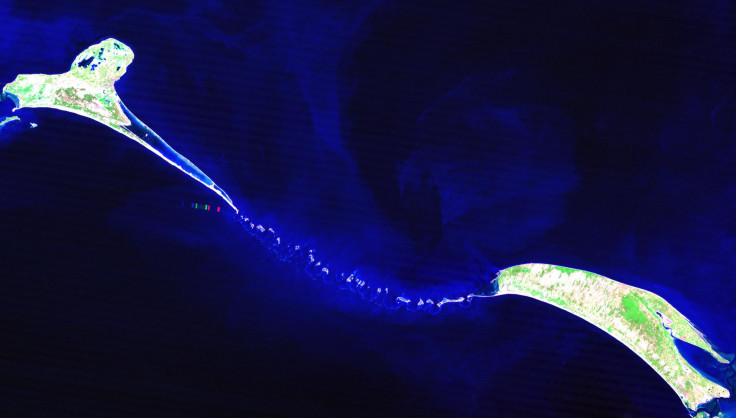The Saga Of Ram Sethu: Indian Government Plan To Develop Shipping Lanes To Sri Lanka Angers Hindus And Environmentalists

Renewed plans by the Indian government to develop a deep water shipping lane between the southern tip of India and Sri Lanka has outraged some fundamentalist Hindus who claim that the proposed project will destroy a coral bridge sacred to their faith.
At the center of the controversy is “Ram Sethu” (called “Adam’s Bridge” in English), an 18-mile-long coral and limestone shoal linking Tamil Nadu in India with Mannar Island off the coast of Sri Lanka. Ancient Hindu scriptures declared that the “bridge” was constructed by either the ape god Hanuman or Lord Rama to allow Rama to cross to Sri Lanka to rescue his wife Sita, who was kidnapped by the evil king Ravanna.
The ultimate defeat of Ravanna is a key moment of ancient Indian mythology as it embodies the triumph of good over evil.
In the New Delhi parliament, members of the right-wing Hindu nationalist Bharatiya Janata Party (BJP) called on the government to scrap the plan, even going so far as to accuse the Congress party leadership of exhibiting “no faith in God” for approving the project.
Nonetheless, the government insisted it will proceed with plans to dredge parts of the bridge and its sandbanks in order to permit large container vessels to pass through the slender body of water separating India and Sri Lanka, thereby cutting the usual time required for passage from the west coast of India to the east coast (ships currently have to circumnavigate Sri Lanka, which significantly delays their voyage).
The project -- called the "Ship Channel Project," which will allow large ships to move between the Gulf of Mannar and Palk Bay -- will be managed by the Port of Chennai.
The government even rejected a report by an inquiry committee led by a leading environmentalist, Dr. R.K Pachauri, the United Nations' climate change panel chairman, that opposed the shipping enterprise partly on ecological grounds.
"Dr. Pachauri's recommendations are not acceptable to the government,” said Atulya Misra, chairman of the government's Chennai Port in a statement.
“The government is pressing on with our original plan. Political parties are divided on the issue but all this was taken into account when the decision was [initially] made in 2006.”
A journalist named Kanchan Gupta wrote in Niticentral, an alternative Indian media outlet, that the government should cancel its plans to destroy Ram Sethu, which he called “anti-Hindu.”
“If the stalled … project is revived, dredgers equipped with cutters will resume badgering [our] past, literally and metaphorically, to create a channel for ships,” he wrote.
He also noted that retired marine scientists and experts claimed that the project in its present form could lead to an ecological disaster, given that Ram Sethu appeared to protect the southern coasts of India from the fury of the 2004 tsunami.
“Destroying the sethu, they point out … ‘opens up serious potential damage to the entire Kerala and Tamil Nadu coast when the next tsunami occurs,” Gupta added.
Critics also point out that since Ram Sethu should be designated a national monument -- the demolition of which would be tantamount to a criminal offense.
Subramanian Swamy, president of the Janata Party, another opposition group, told reporters in New Delhi: "The important thing is that the project is not acceptable. It is illegal, arbitrary, unreasonable and extremely expensive.”
An organization called “Save Ram Sethu” also cited that the project would destroy local marine life in the waters.
In a letter to Indian Prime Minister Manmohan Singh, SRS wrote: “Shipping lanes will cause oil spills and marine pollution in the area, which will harm the rare corals and thousands of marine turtles and rare sea animals such as the dugongs. The region will be irrevocably blemished and mankind will lose forever this precious biodiversity hotspot.”
© Copyright IBTimes 2024. All rights reserved.











